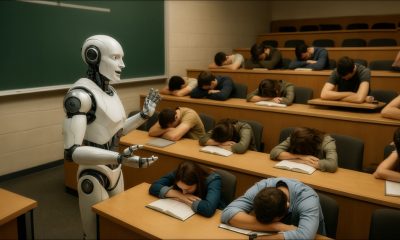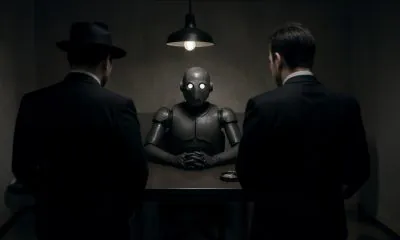Artificial General Intelligence
Video Generation AI: Exploring OpenAI’s Groundbreaking Sora Model

OpenAI unveiled its latest AI creation – Sora, a revolutionary text-to-video generator capable of producing high-fidelity, coherent videos up to 1 minute long from simple text prompts. Sora represents a massive leap forward in generative video AI, with capabilities far surpassing previous state-of-the-art models.
In this post, we’ll provide a comprehensive technical dive into Sora – how it works under the hood, the novel techniques OpenAI leveraged to achieve Sora's incredible video generation abilities, its key strengths and current limitations, and the immense potential Sora signifies for the future of AI creativity.
Overview of Sora
At a high level, Sora takes a text prompt as input (e.g. “two dogs playing in a field”) and generates a matching output video complete with realistic imagery, motion, and audio.
Some key capabilities of Sora include:
- Generating videos up to 60 seconds long at high resolution (1080p or higher)
- Producing high-fidelity, coherent videos with consistent objects, textures and motions
- Supporting diverse video styles, aspects ratios and resolutions
- Conditioning on images and videos to extend, edit or transition between them
- Exhibiting emergent simulation abilities like 3D consistency and long-term object permanence
Under the hood, Sora combines and scales up two key AI innovations – diffusion models and transformers – to achieve unprecedented video generation capabilities.
Sora's Technical Foundations
Sora builds upon two groundbreaking AI techniques that have demonstrated immense success in recent years – deep diffusion models and transformers:
Diffusion Models
Diffusion models are a class of deep generative models that can create highly realistic synthetic images and videos. They work by taking real training data, adding noise to corrupt it, and then training a neural network to remove that noise in a step-by-step manner to recover the original data. This trains the model to generate high-fidelity, diverse samples that capture the patterns and details of real-world visual data.
Sora utilizes a type of diffusion model called a denoising diffusion probabilistic model (DDPM). DDPMs break down the image/video generation process into multiple smaller steps of denoising, making it easier to train the model to reverse the diffusion process and generate clear samples.
Specifically, Sora uses a video variant of DDPM called DVD-DDPM that is designed to model videos directly in the time domain while achieving strong temporal consistency across frames. This is one of the keys to Sora's ability to produce coherent, high-fidelity videos.
Transformers
Transformers are a revolutionary type of neural network architecture that has come to dominate natural language processing in recent years. Transformers process data in parallel across attention-based blocks, allowing them to model complex long-range dependencies in sequences.
Sora adapts transformers to operate on visual data by passing in tokenized patches of video instead of textual tokens. This allows the model to understand spatial and temporal relationships across the video sequence. Sora's transformer architecture also enables long-range coherence, object permanence, and other emergent simulation abilities.
By combining these two techniques – leveraging DDPM for high-fidelity video synthesis and transformers for global understanding and coherence – Sora pushes the boundaries of what's possible in generative video AI.
Current Limitations and Challenges
While highly capable, Sora still has some key limitations:
- Lack of physical understanding – Sora does not have a robust innate understanding of physics and cause-and-effect. For example, broken objects may “heal” over the course of a video.
- Incoherence over long durations – Visual artifacts and inconsistencies can build up in samples longer than 1 minute. Maintaining perfect coherence for very long videos remains an open challenge.
- Sporadic object defects – Sora sometimes generates videos where objects shift locations unnaturally or spontaneously appear/disappear from frame to frame.
- Difficulty with off-distribution prompts – Highly novel prompts far outside Sora's training distribution can result in low-quality samples. Sora's capabilities are strongest near its training data.
Further scaling up of models, training data, and new techniques will be needed to address these limitations. Video generation AI still has a long path ahead.
Responsible Development of Video Generation AI
As with any rapidly advancing technology, there are potential risks to consider alongside the benefits:
- Synthetic disinformation – Sora makes creating manipulated and fake video easier than ever. Safeguards will be needed to detect generated videos and limit harmful misuse.
- Data biases – Models like Sora reflect biases and limitations of their training data, which needs to be diverse and representative.
- Harmful content – Without appropriate controls, text-to-video AI could produce violent, dangerous or unethical content. Thoughtful content moderation policies are necessary.
- Intellectual property concerns – Training on copyrighted data without permission raises legal issues around derivative works. Data licensing needs to be considered carefully.
OpenAI will need to take great care navigating these issues when eventually deploying Sora publicly. Overall though, used responsibly, Sora represents an incredibly powerful tool for creativity, visualization, entertainment and more.
The Future of Video Generation AI
Sora demonstrates that incredible advances in generative video AI are on the horizon. Here are some exciting directions this technology could head as it continues rapid progress:
- Longer duration samples – Models may soon be able to generate hours of video instead of minutes while maintaining coherence. This expands possible applications tremendously.
- Full spacetime control – Beyond text and images, users could directly manipulate video latent spaces, enabling powerful video editing abilities.
- Controllable simulation – Models like Sora could allow manipulating simulated worlds through textual prompts and interactions.
- Personalized video – AI could generate uniquely tailored video content customized for individual viewers or contexts.
- Multimodal fusion – Tighter integration of modalities like language, audio and video could enable highly interactive mixed-media experiences.
- Specialized domains – Domain-specific video models could excel at tailored applications like medical imaging, industrial monitoring, gaming engines and more.
Conclusion
With Sora, OpenAI has made an explosive leap ahead in generative video AI, demonstrating capabilities that seemed decades away just last year. While work remains to address open challenges, Sora's strengths show the immense potential for this technology to one day mimic and expand human visual imagination at a massive scale.
Other models from DeepMind, Google, Meta and more will also continue pushing boundaries in this space. The future of AI-generated video looks incredibly bright. We can expect this technology to expand creative possibilities and find incredibly useful applications in the years ahead, while necessitating thoughtful governance to mitigate risks.
It's an exciting time for both AI developers and practitioners as video generation models like Sora unlock new horizons for what's possible. The impacts these advances may have on media, entertainment, simulation, visualization and more are just beginning to unfold.












